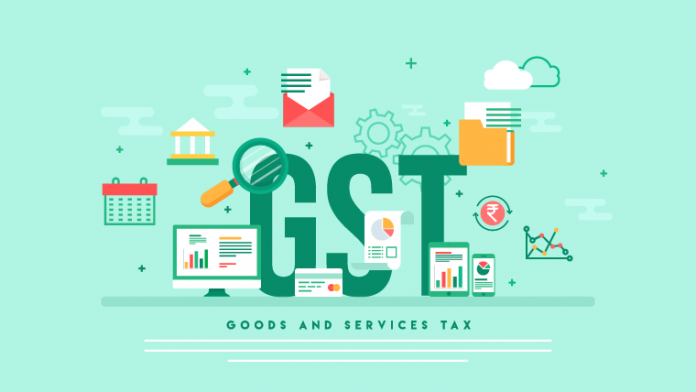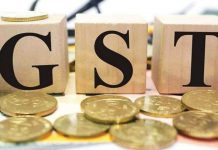This article is written by Vishesh Gupta from the Institute of Law, Nirma University, Ahmedabad. The article evaluates the benefits and concerns related to GST and also discusses the taxation system before GST.
Table of Contents
Introduction
Goods and Sales Tax is an indirect tax system that replaced the old cumbersome indirect tax system of India. Late Shri Atal Bihari Vajpayee, the 15th Prime Minister of India, introduced the GST system in the year 2000 and set up a committee to design a GST model for the country. However, it was finally introduced in 2016 through the Constitutional (One Hundred and First Amendment) Act, 2016.
GST is acknowledged worldwide and is one of the central government’s most significant projects. The objective of introducing GST was to create a single national market with a single tax system to reduce unnecessary burden on the taxpayers.
It has now been in effect for three years, and evaluation of this tax system is vital to find out whether this tax system is more beneficial than the earlier tax system for the common man of the country.
What is GST?
Goods and Sales Tax is a unified tax on every value-added, starting from manufacturing to the consumption of Goods and/or Services. It is a destination-based tax system and is also known as consumption tax because, under GST, tax is levied where the Goods or Services are consumed.
In India, a dual model of GST has been adopted i.e. where tax is levied concurrently by the central and the state government. The GST system comprises of Central Goods and Services Tax (CGST), State Goods and Services Tax (SGST), Union Territory Goods and Services Tax (UGST). For inter-state transactions (where the location of the supplier and the place of supply in different states), integrated Goods and Services Tax (IGST) is levied.
Initially, there was a four-tiered GST rate: 5%, 12%, 18% and 28%. However, currently, the rates have been increased to 7 with 0%, 0.25%, and 3% added to the list.

Condition before GST
Before the introduction of GST, there were more than multiple different indirect taxes. There was a 3-tier system of tax collection prevalent in India before GST.
Central Government levied Central excise duty (on manufacturing), Service tax, Central State tax (for interstate sale and was collected by the State), and CENVAT (Central Value Added Tax).
State Governments levy tax on retail sales (VAT), entry of goods in the State (Entry Tax), Luxury Tax, Purchase Tax, etc. VAT was charged differently in different states. In cases of VAT levied by the State, there was a lack of uniformity in terms of registration, return filing and assessment procedures. Businesses which had its office in 2 different states had to follow different rules.
Local bodies levied entertainment tax, octroi, property tax.
Disadvantages of Multiple Taxes
- Plenty of Taxable events: On a single transaction, taxes were levied at various stages by different authorities. Excise duty was levied for manufacturing, and service tax was levied on transportation. The State government collected sales tax on the sale of goods or services.
- Double Taxation: On a single transaction, multiple taxes are levied by different authorities.
- Cascading effect: The cascading effect means “tax on tax.” The tax was levied on the total value, which includes all taxes paid up to that point. If the tax is always chargeable on the selling price of the Goods, the burden of tax keeps on increasing at each point of sale.
- No uniformity: Before GST, VAT charges were levied differently for different states. It was difficult for corporations who had to face procedural difficulties.
Benefits of GST
These problems finally led to the introduction of GST in India. It was introduced with the objective of reducing the problems created by multiple taxes and to unify these taxes in one single tax. The benefits of GST are:
To the Government
- Creation of a single national market for ease of transaction, boosting foreign investment, and “Make in India” campaign.
- Harmonization of laws on taxes between state and central government. A common tax base and common system of classification of goods make an integrated taxation system.
- It will boost export and manufacturing activity because there is no GST levied on export, generate more employment and therefore increase GDP leading to substantive economic growth.
- As all the returns of GST are filled online, it will promote a paperless economy and will promote environmental protection.
To a Common Man
Any change in the tax system of a country greatly affects a common man. The tax system determines the inflation or deflation in the price of the products or services consumed. So, the benefits of GST to a common man are:
- As multiple taxes are subsumed by GST tax, the procedural aspect, which includes filing returns, has become easier and has increased ease of doing business.
- The cascading effect is not present as GST allows for the facility of Input Tax Credit where tax already paid on input is used as a credit to reduce the tax payable on the output.
- As export is a Zero-rated supply, which means there is zero % tax on exports, a business can sell its product in the international market at a lower price, which gives the company a competitive edge.
- The taxpayer’s burden is reduced as they don’t have to pay multiple taxes on the same transaction, which would lead to more consumption, which in turn means more production.
- As the tax burden on the sellers has reduced because of the reduction of the cascading effect, the price of the goods or services reduces, thereby increasing the liquidity in the hand of the customer, which they can put in different uses. For Example, the burden of all the taxes on drugs was about 13% in the pre GST era. In the GST era, most of the life-saving drugs are in the 5% GST tax slab.
- Purchasing goods from small retailers who are covered under the GST exemption will cost less for consumers.
Slab rates for different categories of goods and services
Goods
The tax slabs have been decided upon the necessity of goods or services. Any essential commodity is placed under lower tax slabs whereas any luxury for a normal person is placed under higher tax slabs.
|
GST RATES (June 2020) FOR ESSENTIAL COMMODITIES AND PRODUCTS OF DAILY NEED |
||
|
Category |
Tax Rates |
Products |
|
Food and beverages |
Exemption / Nil |
Unbranded Atta, Fresh milk, curd, Fresh vegetables, eggs, Cereals, water(not aerated), common salt, meat(not in a container) |
|
5% |
Tea, coffee, edible oil, sugar, spices, dried vegetables packed in containers and bearing registered brands. |
|
|
12% |
vegetables, fruits, nuts preserved using sugar/ vinegar/acetic acid. |
|
|
18% |
Chocolate and cocoa products |
|
|
Medicines, medical instruments, and sanitary products |
Exemption / Nil |
Human blood, contraceptive, sanitary pads |
|
5% |
Life-Saving drugs including oral rehydration salts, vaccines, medicine for diabetes, tuberculosis, HIV-AIDS, Insulins, artificial kidneys and stents |
|
|
12% |
Toothpowder, bandage, gauge, photographic films/plates in X-Rays |
|
|
18% |
Medicine containing nicotine Polacrilex like Nicotine Gum; Haircare products (except Mehendi), hospital furniture such as beds, operating tables |
|
|
28% |
No pharmaceutical product under this slab |
|
|
Apparels and Footwears |
5% |
Apparel and clothing accessories, knitted or crocheted, of selling value exceeding Rs. 1,000 per piece. |
|
12% |
Apparel and clothing accessories, knitted or crocheted, of selling value exceeding Rs. 1,000 per piece. |
|
|
18% |
Clothes made of vulcanized rubber, fur skin or leather (other than sports glove) |
|
|
Real Estate |
1% |
Without ITC, Residential property which is not a part of the affordable housing segment. |
|
5% |
Without ITC, Residential property which is not a part of the affordable housing segment. |
|
|
12% |
Commercial properties |
|
|
GST RATES FOR LUXURY PRODUCTS AND INJURIOUS SUBSTANCES |
||
|
Category |
Tax |
Product |
|
Injurious substances |
28% |
Smoking pipes (including pipe bowls) and cigar or cigarette holders Unmanufactured tobacco; tobacco refuse [other than tobacco leaves] Pan masala Caffeinated Beverages |
|
Motor vehicles |
5% |
Carriages including motor and non-motor vehicles for disabled persons |
|
12% |
Vehicles running on electric motors, fuel cells. Bicycle and its parts and accessories Rickshaws, animal-drawn vehicles |
|
|
28% |
Motor cars for the transport of persons. It includes Racing cars as well. Petrol/CNG/LPG car with less than 1200 CC and length which is less than 4 meters. Petrol/CNG/LPG car with less than 1200 CC and length which is more than 4 meters. Motor vehicles for the transport of goods. |
|
|
Cosmetic |
18% |
Hair oil, sanitizers, hand wash, essential oils |
|
28% |
Perfumes and toilet waters Beauty or makeup preparations for the care of the skin |
|
|
Gambling |
28% |
Lottery authorized by State Governments, |
Further, for the goods mentioned in this list, cess is an additional tax that is levied with GST.
|
COMPENSATION CESS FOR PARTICULAR PRODUCTS |
|||
|
Category |
Product |
GST |
Compensation Cess |
|
Motor Vehicles |
Petrol/CNG/LPG car with less than 1200 CC and length which is less than 4 meters |
28% |
1% |
|
Petrol/CNG/LPG car with less than 1200 CC and length which is more than 4 meters |
28% |
15% |
|
|
Petrol/CNG/LPG car with more than 1200 CC (Irrespective of Length) |
28% |
22% |
|
|
Injurious Substances |
Tobacco (Except Tobacco Leaves) |
28% |
11%-290% |
|
Pan Masala |
28% |
135% |
|
These 3 tables clearly show that the GST slabs have been designed in such a manner as to charge minimum for essential products and the products for daily needs and to charge at the higher side for luxury products and products which are injurious to health.
Services
|
Tax Rates |
Services |
|
Nil/Exemption |
Health Care & Education, Services by the government (Except Post Office), Services by RBI, SEBI, transportation in railways (not in First class or air-conditioned coach), printing of newspapers |
|
5% |
Services of house-keeping, such as plumbing, carpentering, supply of restaurant services, Air travel (Economy) |
|
12% |
Hotel accommodation where the cost per day is Rs. 1000 to Rs. 7500, Drinking water packed in 20 L bottles, Air travel (Business class) |
|
18% |
Education from private coaching classes, Movie Tickets over Rs. 100, Postal and courier services, Mineral water, and other distribution services. |
|
28% |
Gambling, Food/drinks at AC 5-star hotels, Amusement parks, water parks. |
Concerns over GST
Even though GST is the biggest tax reform in Independent India and is a very successful practice all around the world, its advent in India has been faced by roadblocks. Some of the criticisms against GST has been:
- A supplier plays a big role in the procedure of claiming ITC by the recipient. A recipient can only receive the full ITC if the supplier of the input goods files GSTR-1 which contains the record of outward suppliers. If the supplier refuses to file GSTR-1, then the recipient won’t be able to claim ITC for the GST he has paid.
- The compliance system of GST which includes digital record keeping and filing records requires new and updated software that is compliant with GST.
- It has increased the cost of businesses as they have to either update their existing accounting system to make it GST compliant or purchase new software.
- As it was a new process, businesses were not able to adapt to the new system. This problem was intensified for small/local businesses as the whole process of filing GST return has been done online. This change might be difficult for small businesses to adopt.
- Slab rates for GST have been changed frequently in the GST Council meeting. The 15th Finance Commission Chief, N.K. Singh and also the NITI Ayog have expressed that changes in tax rates should not be frequent.
- The Niti Ayog has also contended that there are too many tax slab rates and there should only be 2 slab rates for GST as to reduce confusion and increase the stability of the tax system of India.
- In the pre-GST era, businesses with turnover more than Rs. 1.5 crores had to pay excise duty. But in the GST era, businesses have to pay GST if the turnover exceeds Rs. 40 Lakhs.
Tackling the Concerns
Software System for filing GST
Even though the software system for GST is different from previous taxes and it may have been difficult for traders and businesses when GST was introduced, change is never easy. Initial adjustments to change are difficult, however, the tax structure of India has improved and it is beneficial for the common man (which includes business) as the no.of taxes and the tax burden has been reduced. Even the software, once understood, taxes are easy to file online.
Frequent Changes in GST Rates
One of the biggest problems of GST has been the frequent changes in GST rates. Even the current Finance Minister of India, Shrimati Nirmala Sitharaman has agreed to this criticism. She said that frequent changes have led to an inverted duty structure where the price of raw materials has become more costly than the actual output. As a result of frequent changes, businesses claim that they are not able to plan how much money do they have to keep for taxation in 1 financial year
Considering this problem, the GST Council is set to make the meeting where tax rates are changed, to a yearly affair. A GST Council would meet every 3 months for tax rate consideration, however now this has become a yearly affair.
Nirmala Sitharaman also confirmed that the government is trying to streamline the GST to have 3 slabs.
GST Return Filing
A regular taxpayer has to file two returns monthly (GSTR-1, GSTR-3B) and an annual return (GSTR-9/9C) for each GST registration separately.
For a business, if the turnover is less than Rs. 5 Crore, only 1 return has to be filed (GSTR-3B) and the GSTR-1 has to be filled quarterly.
If the turnover is more than Rs. 5 Crore, 2 returns have to be filed monthly (GSTR-1, GSTR-3B) and an annual return.
For more details on GST Return forms and their due date, it is available here.
Registration of taxpayer, payment of GST, refund, input tax credit can be filed on https://www.gstn.org.in/.
Action in Covid-19
Because of the Covid-19 situation in India, the Ministry of Finance has declared the extension of monthly filing of return for the month of March, April, and May 2020 to June 2020.
Issue of transparency
Most of the taxpayers are not aware of the different slab rates for goods and services, the procedure to file returns, and also certain features like composition and E-Way bill system. GST has its own exclusive web portal which provides exhaustive information about the intricacies of GST. Any new notification, circulars, or news issued by the government about GST is uploaded on the website so that a taxpayer is well aware of GST.
Conclusion
GST Tax System is a practice that is used by various countries. It is prone to some defects and especially in India, there have been errors while implementing it. However, as discussed in this article, the government is realizing the problems and correcting them. There is no doubt that people have faced problems with the GST system, however, every change is difficult. There were 17 different taxes levied by state and central government which benefitted no one and created a cumbersome, nonuniform tax system. GST has subsumed all these taxes into 1 tax which has different slab rates. As elucidated earlier, the classification of goods and services shows that GST has been made for protecting the interest of the taxpayers and there are different initiatives like web portals for spreading awareness and developing transparency for the taxpayers.
References
- https://www.gst.gov.in/
LawSikho has created a telegram group for exchanging legal knowledge, referrals and various opportunities. You can click on this link and join:
 Serato DJ Crack 2025Serato DJ PRO Crack
Serato DJ Crack 2025Serato DJ PRO Crack










 Allow notifications
Allow notifications



